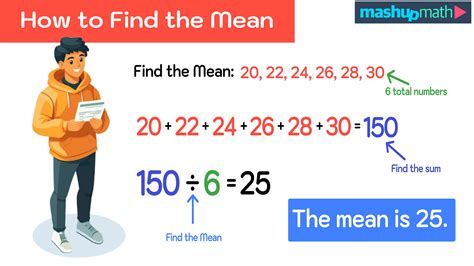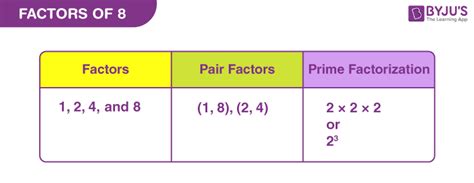The concept of mean, or average, is a fundamental statistical measure used to describe the central tendency of a dataset. It provides a single value that represents the middle of the data distribution, giving us an idea of what a typical value might look like. Calculating the mean is a straightforward process, but there are different methods and considerations depending on the nature of the data and the specific requirements of the analysis. In this article, we will explore five ways to calculate the mean, each with its own unique application and significance.
Key Points
- The arithmetic mean is the most common method of calculating the mean, suitable for most datasets.
- The geometric mean is used for datasets that involve multiplication or growth rates, such as investment returns.
- The harmonic mean is applied in situations where the data represents rates or ratios, such as speeds or frequencies.
- The weighted mean is used when the data points have varying levels of importance or weights.
- The trimmed mean is a robust estimator of the mean, used to reduce the effect of outliers in the dataset.
Arithmetic Mean

The arithmetic mean, often simply called the mean, is calculated by summing all the values in a dataset and then dividing by the number of values. This method is the most straightforward and is used for the majority of statistical analyses. The formula for the arithmetic mean is: μ = (Σx) / N, where μ is the mean, Σx is the sum of all the values, and N is the number of values. For example, if we have the dataset {1, 2, 3, 4, 5}, the arithmetic mean would be (1 + 2 + 3 + 4 + 5) / 5 = 15 / 5 = 3.
Geometric Mean
The geometric mean is used for datasets where values are meant to be multiplied together or when dealing with growth rates. It is calculated by taking the nth root of the product of n numbers. The formula is: G = (x1 * x2 *… * xn)^(1/n). For instance, if we have the dataset {2, 4, 8}, which represents doubling, the geometric mean would be (2 * 4 * 8)^(1⁄3) = 64^(1⁄3) = 4. This method is particularly useful in finance and economics for calculating rates of return over time.
| Type of Mean | Formula | Example |
|---|---|---|
| Arithmetic Mean | μ = (Σx) / N | (1 + 2 + 3 + 4 + 5) / 5 = 3 |
| Geometric Mean | G = (x1 * x2 *... * xn)^(1/n) | (2 * 4 * 8)^(1/3) = 4 |

Harmonic Mean

The harmonic mean is another type of average, used for rates or ratios. It is defined as the reciprocal of the arithmetic mean of the reciprocals of the values. The formula for the harmonic mean is: H = n / (1/x1 + 1/x2 +… + 1/xn). This method is particularly useful in situations where the data represents rates, such as speeds, or frequencies. For example, if we have the dataset {1, 2, 3}, representing rates, the harmonic mean would be 3 / (1⁄1 + 1⁄2 + 1⁄3) = 3 / (1 + 0.5 + 0.3333) = 3 / 1.8333 ≈ 1.6364.
Weighted Mean
Sometimes, data points have different levels of importance or weights. In such cases, the weighted mean is used. The weighted mean is calculated by multiplying each value by its weight, summing these products, and then dividing by the sum of the weights. The formula is: W = (w1*x1 + w2*x2 +… + wn*xn) / (w1 + w2 +… + wn). For example, if we have the dataset {1, 2, 3} with weights {0.2, 0.3, 0.5} respectively, the weighted mean would be (0.2*1 + 0.3*2 + 0.5*3) / (0.2 + 0.3 + 0.5) = (0.2 + 0.6 + 1.5) / 1 = 2.3 / 1 = 2.3.
Trimmed Mean
The trimmed mean, also known as the truncated mean, is a robust estimator of the mean. It involves removing a portion of the data at the top and bottom (the extremes) before calculating the mean. This method is useful for reducing the effect of outliers in the dataset. The amount of data to be trimmed can vary, but a common approach is to remove a certain percentage from each end. For example, in a 10% trimmed mean, the smallest 10% and the largest 10% of the data are removed, and the mean is calculated from the remaining 80% of the data.
What is the primary difference between the arithmetic mean and the geometric mean?
+The primary difference lies in their application. The arithmetic mean is used for datasets where values are additive, while the geometric mean is used for datasets where values are multiplicative or represent growth rates.
When would you use the harmonic mean over the arithmetic mean?
+The harmonic mean is used in place of the arithmetic mean when the data represents rates or ratios, such as speeds or frequencies, because it provides a better average for these types of data.
How does the weighted mean account for the importance of different data points?
+The weighted mean accounts for the importance of different data points by multiplying each value by its weight before calculating the mean, ensuring that more important data points have a greater influence on the final mean.
In conclusion, the calculation of the mean is not a one-size-fits-all approach. Different types of means are suited for different types of data and analyses, each providing unique insights into the characteristics of the dataset. By understanding and appropriately applying these methods, analysts can derive more accurate and meaningful conclusions from their data, facilitating better decision-making across various fields.



